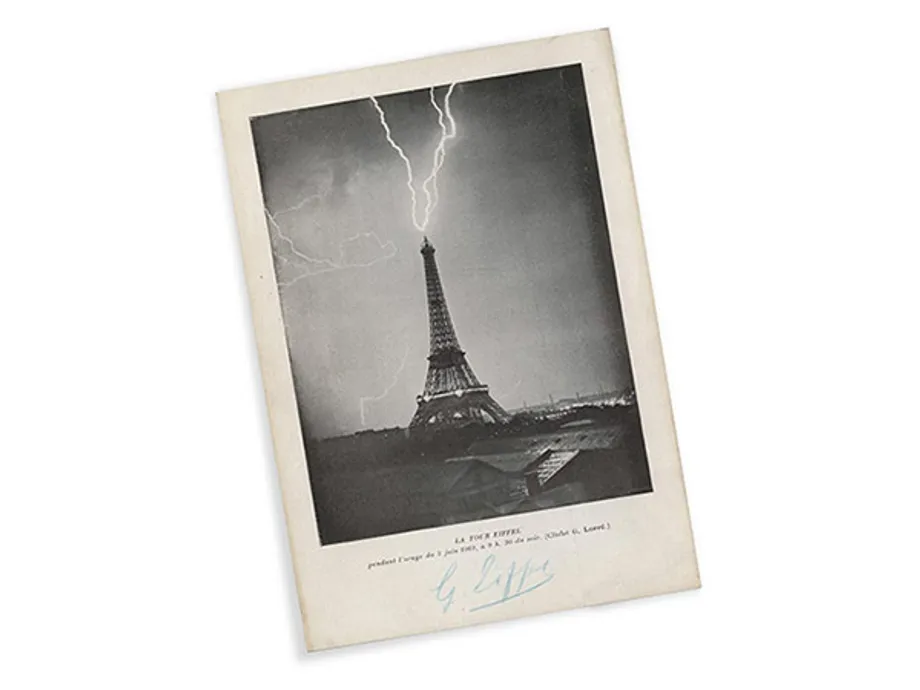Lightning protection
A Lightning Protection System (LPS) protects a structure or building and contents from damage caused by the intensely high voltage currents of a lightning strike (often exceeding a 1,000,000,000 Volt Amps).
Lightning protection systems act like a Faraday Cage for buildings. Protecting the building and its contents from external electric fields by migrating that energy around the cage instead of through its contents.
A LPS offers a lightning strike a low resistance path to ground in order to safely disperse energy. A typical lightning protection system includes lightning rods, metal conductors and ground electrodes.
Eiffel Tower lightning strike
This lithograph shows lightning striking the Eiffel Tower during a storm on 3 June 1902. The original photograph was taken by G Loppe. The illustration shown here was signed in 1913 by Gustave Eiffel, the French civil engineer and architect who built the Eiffel Tower.
The Eiffel Tower was built for the 1889 Universal Exposition in Paris. After Eiffel retired from engineering he went on to make important contributions to the fields of meteorology and aerodynamics. His interest in these areas had been stimulated by wind force effects he had experienced with the structures which he had built.

